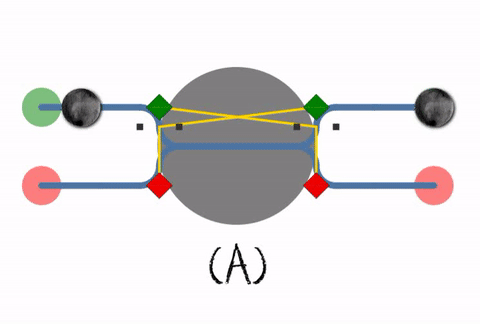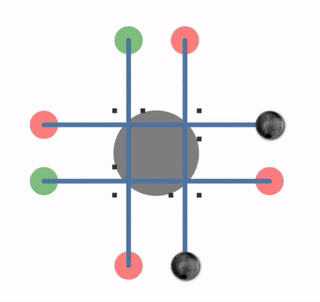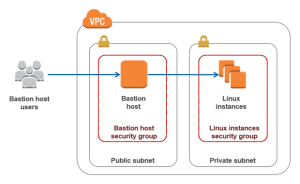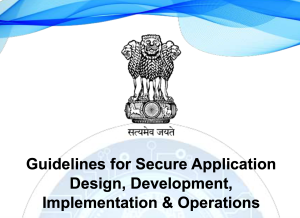
Deadlock is a situation in concurrent computing where two or more processes are unable to proceed because each is waiting for the other to release a resource or complete a specific task. In other words, it is a state of a system where a process or a set of processes is stuck in a permanent blocking state, resulting in a halt in the execution of the program.
To understand deadlock, let’s consider the four necessary conditions known as the Coffman conditions or the deadlock conditions:
- Mutual Exclusion: Each resource can only be held by one process at a time. If a process is currently using a resource, other processes must wait for it to release the resource.
- Hold and Wait: A process holds at least one resource while waiting to acquire additional resources that are currently held by other processes. This condition can lead to a circular waiting scenario.
- No Preemption: Resources cannot be forcibly taken away from a process; they can only be released voluntarily by the process holding them. This means a process cannot be interrupted and have its resources reassigned to another process.
- Circular Wait: There exists a circular chain of processes, where each process is waiting for a resource held by the next process in the chain. The last process in the chain is waiting for a resource held by the first process, thus forming a circular dependency.
If all four conditions are present simultaneously in a system, it can result in a deadlock situation.

Deadlocks can occur in various systems, including operating systems, databases, distributed systems, and concurrent programs. They can have severe consequences, leading to system crashes, resource wastage, and overall system inefficiency.
There are several strategies to prevent and handle deadlocks, including:
- Prevention: This approach involves eliminating one or more of the deadlock conditions. For example, by using preemption to forcibly release resources, implementing a resource allocation policy, or ensuring that resources are requested in a specific order.
- Avoidance: This technique involves dynamically analyzing resource requests and resource allocation to avoid potential deadlocks. It requires a system to have additional information and algorithms to determine if a resource allocation will lead to a deadlock or not.
- Detection and Recovery: If prevention and avoidance mechanisms are not feasible, systems can employ deadlock detection algorithms to identify the presence of a deadlock. Once detected, recovery techniques like killing processes, rolling back transactions, or resource preemption can be applied to resolve the deadlock.
- Ignoring: In some cases, deadlocks may be considered rare or non-critical, and the system may choose to ignore them. This approach assumes that deadlocks will occur infrequently and their impact will be minimal.

It is important to note that the prevention and handling of deadlocks come with trade-offs, including increased complexity, resource overhead, and potential performance impact. Therefore, the choice of the appropriate strategy depends on the specific requirements and characteristics of the system.
Overall, understanding and effectively managing deadlocks is crucial in the design and implementation of concurrent systems to ensure their reliability and efficient resource utilization.
Avoiding deadlocks
Avoiding deadlocks is an approach aimed at ensuring that a system remains free from deadlock situations. While the term “deadlock avoidance” may sound similar to “deadlock prevention,” they differ significantly in their handling of deadlocks. Unlike deadlock prevention, deadlock avoidance does not rely on imposing specific conditions. Instead, it carefully analyzes each resource request to determine if it can be safely fulfilled without resulting in a deadlock.
In order to implement deadlock avoidance, the operating system needs to have additional information about the resources that each process will request and use during its execution. This advance knowledge allows the system to analyze each resource request and determine whether allocating the requested resource will potentially lead to a deadlock. However, a drawback of this approach is the requirement for advance information about future resource requests, which may not always be feasible or practical.
One commonly used deadlock avoidance algorithm is the Banker’s algorithm, which employs a mathematical model to assess resource requests and ensure that the system remains deadlock-free.
In summary, deadlock avoidance is a proactive approach that analyzes resource requests in advance to prevent potential deadlocks. By carefully considering resource all
Preventing deadlocks
Preventing deadlocks involves ensuring that one or more of the four Coffman conditions, which contribute to deadlocks, are not allowed to occur. These conditions are mutual exclusion, hold and wait, no preemption, and circular wait. Here are some approaches for preventing deadlocks by addressing these conditions:
- Mutual Exclusion: This condition requires that at least one resource be non-shareable. Removing mutual exclusion means allowing multiple processes to access a resource simultaneously. However, this may not always be possible or practical, especially for resources that cannot be shared.
- Hold and Wait: To prevent this condition, processes can be required to request all the resources they will need before starting execution or embarking on a specific set of operations. This approach, known as resource preallocation, ensures that processes acquire all necessary resources upfront. However, it can be inefficient and may lead to resource wastage if resources remain unused for long periods.
- No Preemption: Preemption involves forcibly taking a resource from one process and allocating it to another. However, preemption may not always be feasible or desirable, as it can lead to inconsistent processing or significant overhead. Some algorithms, such as lock-free and wait-free algorithms, allow for preemption, but careful consideration is needed to avoid costly rollbacks and maintain system stability.
- Circular Wait: Circular wait occurs when processes form a circular chain, each waiting for a resource held by the next process in the chain. To prevent circular wait, approaches such as disabling interrupts during critical sections or using a hierarchy to establish a partial ordering of resources can be employed. Establishing a hierarchy ensures that processes request resources in a specific order, breaking the circular dependency.
It’s important to note that preventing deadlocks can be challenging, and the effectiveness of prevention strategies depends on the specific system and resource allocation requirements. Different algorithms and techniques may be used to address each of the Coffman conditions and minimize the likelihood of deadlocks occurring.





